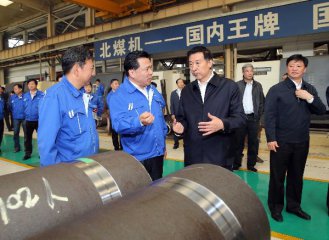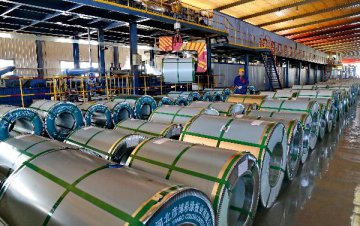
The State-owned Assets Supervision and Administration Commission of the State Council (SASAC) released the first batch of pilots of four reforms on July 15, 2014, initiating practical operation of state-owned enterprises (SOEs) reform. Now two years have passed and the SASAC unveiled pilot expansion on July 14 after disclosing pilot plan of ten reforms early this year.
“At present, work on SOEs reform pilot has been comprehensively rolled out.” Peng Huagang, deputy secretary general of the SASAC, said at a news conference held by the SASAC on July 14, “In terms of pilot on state-owned asset investment and operation companies, pilot work on COFCO Corporation and State Development & Investment Group will be deepened continuously. It will return or grant 21 rights to enterprises. Based on this, it will carry out pilot of state-owned asset operation firms in China Chengtong Holdings Group Ltd. and China Reform Holdings Corporation Ltd. and pilot of state-owned asset investment companies in seven companies including Shenhua Group Corporation Ltd., Wuhan Iron And Steel Company Limited, Baoshan Iron & Steel Co., Ltd., China Minmetals Corporation, China Merchants Group, China Communication Construction Group and China Poly Group Corportaion.”
“These newly-added seven investment companies are all industrial leaders and focusing on the theme of de-capacity and de-stock. The first four ones, namely, Shenhua Group, Baosteel, Wuhan Iron and Steel and China Minmetals are leading in coal, iron and steel and nonferrous metals industries respectively, which are directly closed with supply-side reform, and the last three ones are involved in real estate industry. On the whole, pilot of these seven companies aims to conduct industrial structural adjustment, so as to improve industrial centralization. Future restructuring and integration related to this is indispensable.” Li Jin, chief researcher of China Enterprises Research Institute, told SSN.
Another move which attracts widely attention must be pilot of merger and restructuring of central enterprises. The SASAC chooses China National Building Materials Group Corporation and China National Materials Group Corporation, China Ocean Shipping (Group) Company and China Shipping (Group) Company, and State Power Investment Corporation and State Nuclear Power Technology Company for the pilot.
In addition, to implement pilot on function and power of board of directors, the SASAC will further deepen pilot in China Energy Conservation and Environmental Protection Group, China National Building Materials Group, China National Pharmaceutical Group Corporation and Xinxing Cathay International Group Co., Ltd. Regarding information disclosure of central enterprises, it will select COFCO and China State Construction Engineering Corporation for the pilot.
“The reform of state-owned assets might embrace another upsurge after being advanced in a low-key manner for several months. Recently, both the stands stated by the top meetings and the launch of supporting policies signal that the central government is determined in advancing the reform. The integration of central SOEs might be highlighted in the second half”, as a source involved in the SOEs reform told the journalist.
About the integration of central SOEs, Peng pointed out that “reorganization on group level now moves faster. The reorganization of 10 central SOEs in five groups is actively advanced. Several other reorganization cases are under consideration. The number of central SOEs might be cut to less than 100 within 2016 after integration.”
The number of enterprises directly supervised by the SASAC has been decreased to 105 after CITS Group Corporation being fully merged into China National Travel Service (HK) Group Corporation. But along with the recent establishment of China Aero-Engine Group Co., Ltd., another enterprise directly supervised by the SASAC is added.
What is the next field for integration? The research report by China International Capital Corporation Limited (CICC) believes that two threads can be followed to figure out the central SOEs seeing possible integration. The first is the field involved in both the supply-side reform and the SOEs reform. Latest movement shows that driven by the supply-side reform like de-capacity, fields with overcapacity, including coal, iron & steel, construction materials and non-ferrous metals, are the key focus of the integration of central SOEs. The main purpose is to intensify efforts in cutting capacity and enhance enterprises’ profitability.
The second is the field involved in both the “Belt and Road” initiative and the SOEs reform. Another purpose of the integration of central SOEs is to improve their competitiveness in the overseas market through integration. For instance, central SOEs engaged in transportation, infrastructure construction, machinery and etc. might also see integration.
Notably, on the briefing held on July 14, the SASAC mentioned the establishment of the “venture capital fund for state-owned capitals” and the “structural adjustment fund for SOEs” for the first time.
The aforesaid source told the journalist that “in fact, the two funds have been under research for very long time. The venture capital fund mainly focuses on mixed-ownership reform, while the structural adjustment fund is mainly set for the supply-side structural adjustment. With the establishment of venture capital fund, equity operation of state-owned capitals can be done to make diversified equities operation of SOEs more convenient.”
Translated by Jennifer & Vanessa




















Latest comments